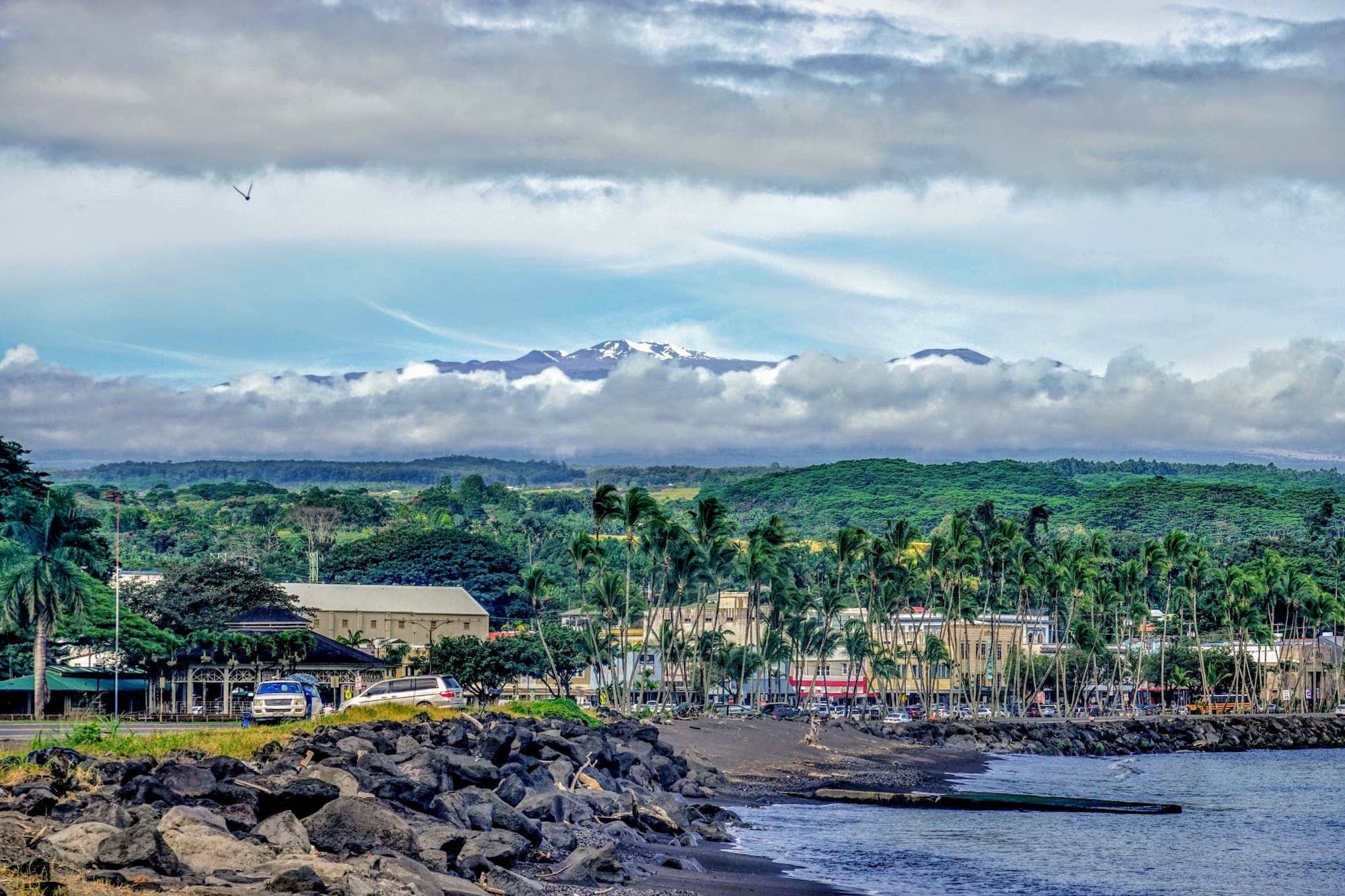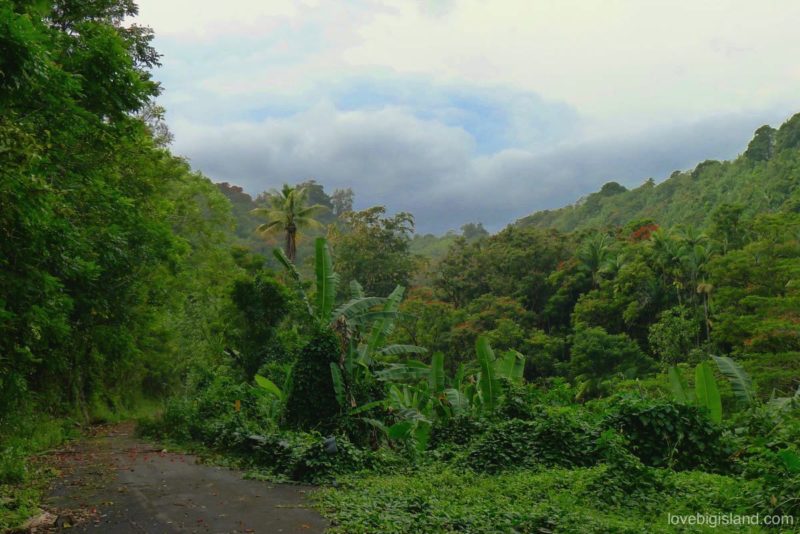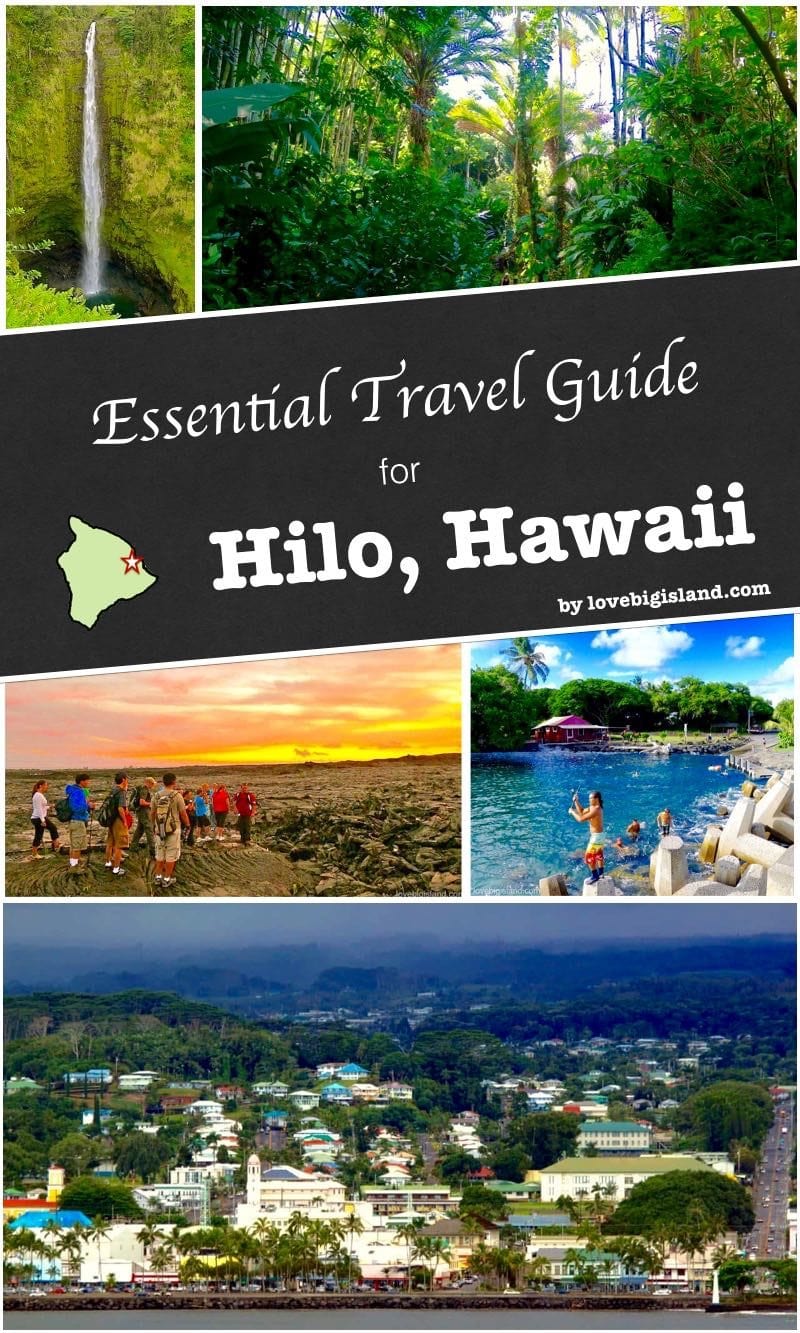Hilo is the capital of the Big Island and lies on the windward (East) side of the Island. This is the rainy side on all Hawaiian islands and rainfall here averages 140 inches annually. This makes the Hilo district tropical and lush, and fills the surrounding (rain)forests with colorful flowers and waterfalls.
Table of contents
- Hilo bragging rights! (why we love Hilo)
- Activities in and around Hilo
- Places to stay
- Directions
- Practicalities
- Weather trends
- Interactive map
Table of Contents
- Hilo bragging rights! (why we love Hilo)
- Activities in and around Hilo
- Places to stay
- Directions
- Practicalities
- Weather trends
- Interactive map
Hilo is not your typical tourist town but very easy to fall in love with. It is rainy and charming, tropical and laid back. People are friendly, and time here seems to run just a bit slower than on the Kona side of the island. Hilo is our favorite city on the Big Island.
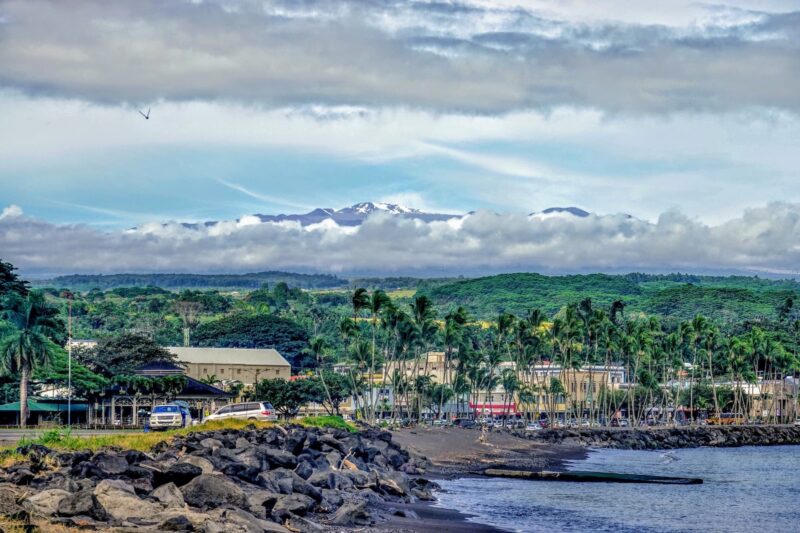
Hilo lies where the slopes of the impressive Maunakea and Mauna Loa volcanoes meet the ocean. In winter these volcanoes are sometimes covered in snow. Image courtesy of Volcano Hideaways.
Hilo (Hawaii): students, culture, orchids, and capital of the Big Island
Next to being the Big Island capital Hilo also is the largest city on the island. With a population of almost 45.000 it is more than 3 times as populous as Kailua Kona and home to almost a quarter of all residents of the island of Hawaiʻi.
Hilo is home the University of Hawaii Hilo campus whose students and staff form about 10% of all of Hilo’s inhabitants. This gives parts of Hilo the vibe of a college town, with its own special atmosphere.
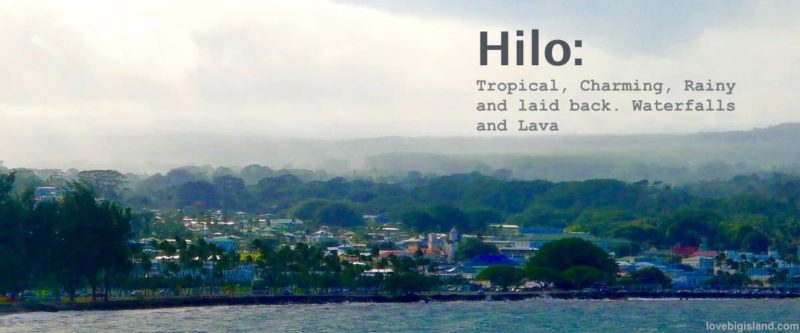
Hilo also is considered the Cultural capital of the island. Historic buildings, two recent tsunamis, and a heritage of the old plantations days set the scene. You’ll want to check the galleries and museums in downtown Hilo and don’t miss the farmers market that is opened every day of the week but whose BIG days are Wednesday and Saturday.
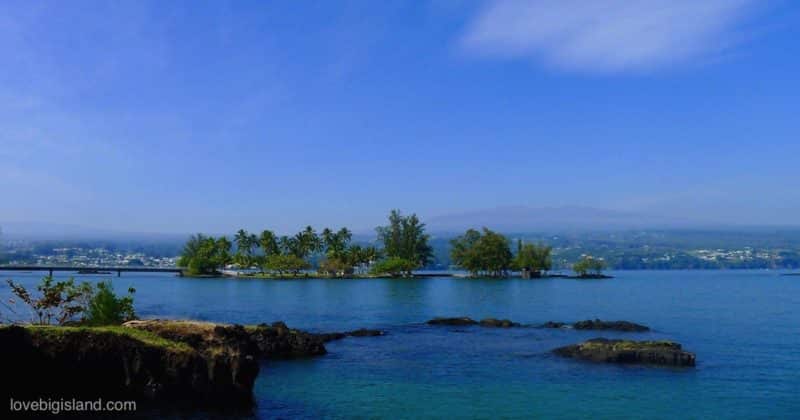
Mokuola (Coconut island) is a small park in Hilo just offshore from Liliʻuokalani Park and Gardens. There is a beach, a tower to jump from into the ocean, and picnic tables
Did you know that Hilo is the Orchid Capital of the world? The Lush climate on this side makes it the perfect place for cultivating orchids. If you keep your eyes open you might find a few in the ‘wild’ yourself.
A good local resource about Hilo with often updated local events, a 1-hour guided walking tour, and more local information, is the Downtownhilo website.
Activities in and around Hilo
There are plenty of things to do in Hilo to spend a day or two. You can go see waterfalls, visit a few museums, check out the zoo, or visit one of the black sand beach parks in and around Hilo. Read more information on our page dedicated to activities in Hilo.
There are many easily accessible spectacular waterfalls and lush rainforest trails to pick in and around Hilo, of which the Rainbow Falls and “Boiling Pots” are the most famous.
Around Hilo there is also plenty of action for the outdoors-minded visitor:
1: Activities north of Hilo (Hāmākua coast):
North of Hilo the lush Hāmākua coast stretches out, with many scenic routes, canyons, and waterfalls that can easily keep you mesmerized for the day.
2: Activities south of Hilo (Puna district)
South of Hilo you can find the Puna district. This is the newest part of the island which is visible from the wild nature and high volcanic activity.
In the middle of Puna you find the picturesque old hippie town of Pahoa. Plan a day in Puna to see a few extremely scenic drives between quaint beach parks, dip in hot ponds heated by the volcano, and see lava flowing into the sea (of course, only when the flow is active).
3: Activities west of Hilo (Volcano Village)
Volcano Village and the Hawaii Volcanoes National Park are a 40 minute drive to the south-west away from Hilo.
Both deserve an important role in your itinerary if you are interested in active volcanoes and some of the magical rainforest on the Big Island.
Where to stay in Hilo
Where you stay on the Hilo side of the Big Island depends on your ultimate goals. Adventurous folks might want to stay at elevation nearby the national park, while families may find the services in Hilo Town more appealing. Then there is also the scenic and spectacular Hamakua coast north of Hilo, and the more rugged and off-the-path Puna district to the south.
In our “where to stay in Hilo” guide, we break down the best options on the Hilo side for different kinds of travelers, including families, first timers, solo travelers, active travelers, beach bums, and repeat visitors. In our suggestions, we include high-end, mid-range, and budget-friendly suggestions for each.
Directions to Hilo
Hilo is the landing place for many visitors to the Big Island through the Hilo International Airport. All the main rental car agencies have an office at the airport, but it is also possible to leave the airport by bus (hele-on bus).
Kailua-Kona (86 miles, 2 hr 20 min), Waimea (55 miles, 1 hr 20 minutes), Pahoa (20 miles, 35 minutes) and Volcano Village (30 miles, 50 min) are all easily reachable by car.
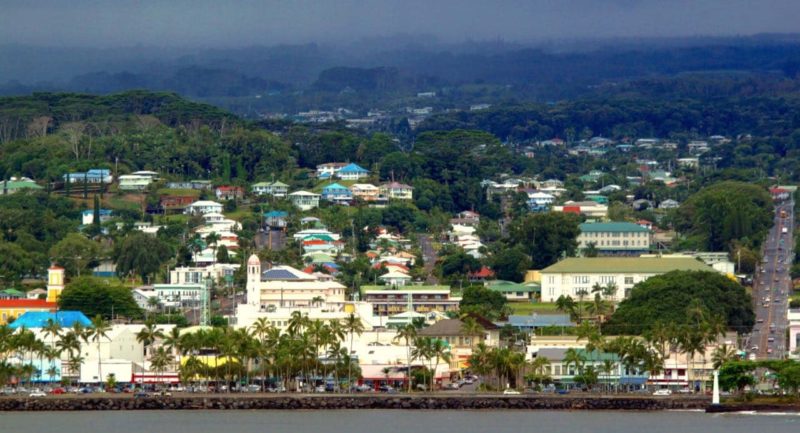
Hilo as seen from the ocean looking towards downtown. Adapted from original image by Prayitno on Flickr, published under a CC BY 2.0 license.
Practicalities
With an average rainfall of 140 inches (!) annually a light raincoat is not a luxury. However, the rain here has the courtesy to wait mostly for the evening, and weeks without rainfall (during the day) are common.
Local Weather in Hilo:
Weather in Hilo is more humid and less sunny when compared to the rest of the Big Island but don’t worry to much about the weather: you are still in the so-called “tropical United States”!
If you want to see what this means for your visit to Hawaii (average temperature, hours of sunshine, cloudy days and precipitation) check out the monthly average weather for Hilo.
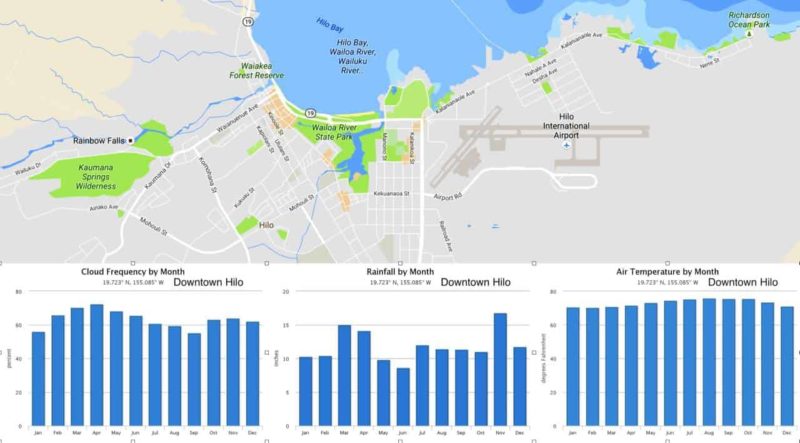
Average monthly cloud frequency, rainfall and temperature for downtown Hilo on the Big Island of Hawaii
Interactive Map of Hilo:
We have added what we think are the most important stops and activities in and around Hilo on an interactive map. This map lists our highlights for Hilo and the Hamakua coast. Click any icon to find more information about that local activity, shop, or hotel/vacation rental.
Are you looking for the map of another part of the Big Island? We also have interactive maps of:
